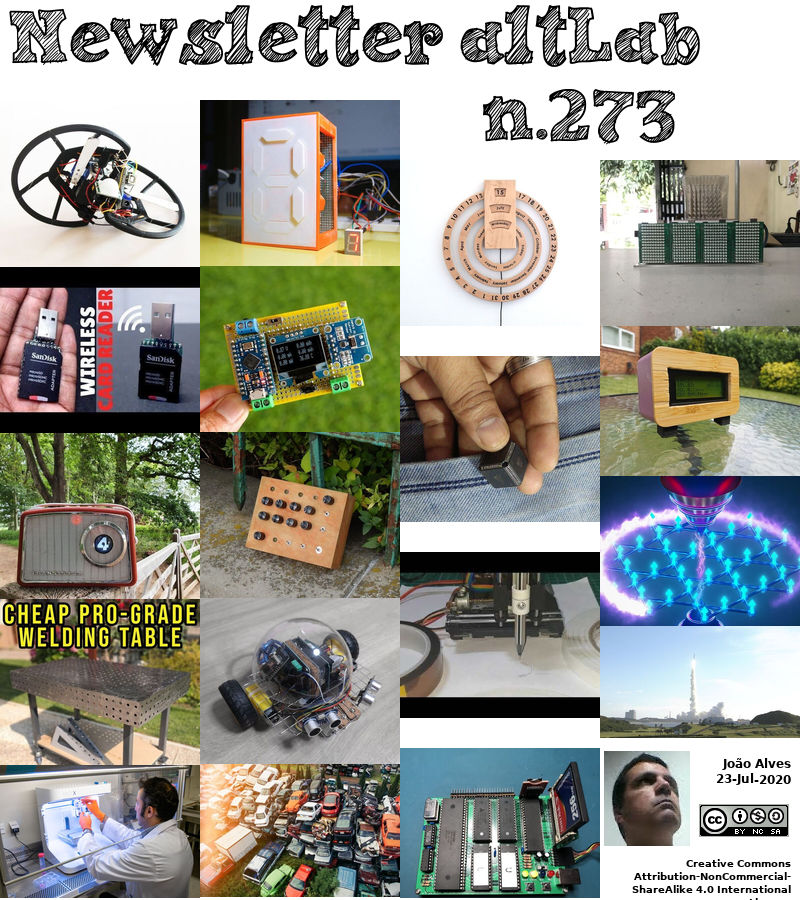2020-07-23 - Nº 273
Editorial
Esta é a Newsletter Nº 273 que se apresenta com o mesmo formato que as anteriores. Se gostar da Newsletter partilhe-a!
Todas as Newsletters encontram-se indexadas no link.
Esta Newsletter tem os seguintes tópicos:
Faz hoje anos que nascia, em 1886, o físico alemão, nascido na Suíça Walter H. Schottky. Ele fez pesquisas em física do estado sólido que levaram ao desenvolvimento de vários dispositivos electrónicos. Ele descobriu o efeito Schottky, uma irregularidade na emissão de termiões num tubo de vácuo e inventou o tubo de tetrodo de grade de tela (1915). O díodo Schottky é um díodo de alta velocidade com muito pouca capacitância de junção (também conhecido como "díodo portador quente" ou "díodo de barreira de superfície".) Ele usa uma junção metal-semicondutora como barreira Schottky, em vez do semicondutor junção semicondutora de um díodo convencional.
Também faz hoje anos que nascia, em 1906, o químico suíço-jugoslavo Vladimir Prelog. Ele partilhou o Prémio Nobel de Química de 1975 com John W. Cornforth pelo seu trabalho na estereoquímica de moléculas e reacções orgânicas. Estereoquímica é o estudo dos arranjos tridimensionais de átomos dentro de moléculas. Ele foi o autor de regras sistemáticas de nomenclatura para moléculas e sua versão de imagem espelhada, ou seja, qual configuração será chamada de "dextra" e qual será o "levo" (direita ou esquerda). Além disso, por difracção de raios X, ele elucidou a estrutura de vários antibióticos.
Por fim, faz hoje anos que nascia, em 1952, o cientista da computação e visionário americano Mark Weiser. Ele foi o director de tecnologia da XEROX PARC, e é lembrado por ter desenvolvido a ideia pioneira do que ele chamou de "computação omnipresente". Ele cunhou esse termo em 1988 para descrever um futuro em que computadores pessoais serão substituídos por pequenos computadores embutidos em dispositivos "inteligentes" do quotidiano (itens do quotidiano, como cafeteiras e copiadoras) e sua conexão via rede. Ele disse: “Primeiro, os mainframes, cada um partilhado por muitas pessoas. Agora estamos na era da computação pessoal, pessoa e máquina observando-se inquietas na área de trabalho. Em seguida, vem a computação omnipresente, ou a era da tecnologia calma, quando a tecnologia retrocede para o fundo de nossas vidas.
Nesta semana que passou, foram enviados para o espaço em direcção a Marte dois foguetões. O primeiro foi lançado no passado domingo num foguetão Japonês uma sonda robótica dos Emirados Árabes Unidos. Esta viagem terá a duração de cerca de 7 meses até chegar a Marte.
Hoje, foi lançado pela China a sua mais ambiciosa missão a Marte, numa tentativa de pousar com sucesso uma sonda no planeta vermelho, feito alcançado apenas pelos Estados Unidos até à data. A Tianwen-1, é composta por uma sonda e por um rover equipados com instrumentos de recolha de dados. Os objectivos da missão são a exploração do solo marciano, procurando perceber a distribuição de água gelada do planeta e a composição da sua superfície, assim como do seu clima e atmosfera.
Na Newsletter desta semana apresentamos diversas noticias, artigos científicos assim como projetos de maker. É apresentada a revista HackSpace Magazine Nº 33 de Agosto.
 João Alves ([email protected])
João Alves ([email protected])
O conteúdo da Newsletter encontra-se sob a licença  Creative Commons Attribution-NonCommercial-ShareAlike 4.0 International License.
Creative Commons Attribution-NonCommercial-ShareAlike 4.0 International License.
Novidades da Semana

For Mars, Hope (and a little Perseverance, too) shines in UAE's 'Apollo moment'
"The United Arab Emirates is on its way to Mars, claiming the title of first Arab country to launch an interplanetary mission, which it designed and built in just six years and dubbed Hope. The Hope Mars orbiter launched toward Mars on a Japanese rocket on Sunday (July 19). Its name was carefully chosen to reflect the country's goal for the mission, which focused as on spurring space exploration and science in the UAE as on actually reaching the Red Planet. But like the name of NASA's own Mars mission launching this month, the Hope name has taken on a new resonance over the past months as the world navigates the throes of the coronavirus pandemic, which complicated launch preparations for both Mars missions. Nevertheless, both spacecraft made it to their rockets in time for the rare three-week launch window to the Red Planet. "Whether it's the Mars Perseverance mission or the Mars Hope mission, all of us believe that this is critical for our nations to inspire the next generation, to provide hope, and demonstrate perseverance," NASA administrator Jim Bridenstine said during a webcast held before launch." [...]
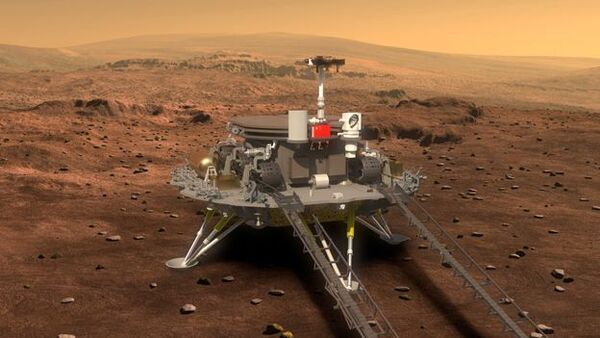
China's Tianwen-1 Mars rover rockets away from Earth
"The six-wheeled robot, encapsulated in a protective probe, was lifted off Earth by a Long March 5 rocket from the Wenchang spaceport on Hainan Island at 12:40 local time (04:40 GMT). It should arrive in orbit around the Red Planet in February. Called Tianwen-1, or "Questions to Heaven", the rover won't actually try to land on the surface for a further two to three months. This wait-and-see strategy was used successfully by the American Viking landers in the 1970s. It will allow engineers to assess the atmospheric conditions on Mars before attempting what will be a hazardous descent. Tianwen-1 is one of three missions setting off to Mars in the space of 11 days." [...]
Outras Notícias

NASA Mission Will Study the Cosmos With a Stratospheric Balloon
"Work has begun on an ambitious new mission that will carry a cutting-edge 8.4-foot (2.5-meter) telescope high into the stratosphere on a balloon. Tentatively planned to launch in December 2023 from Antarctica, ASTHROS (short for Astrophysics Stratospheric Telescope for High Spectral Resolution Observations at Submillimeter-wavelengths) will spend about three weeks drifting on air currents above the icy southern continent and achieve several firsts along the way. Managed by NASA's Jet Propulsion Laboratory, ASTHROS observes far-infrared light, or light with wavelengths much longer than what is visible to the human eye. To do that, ASTHROS will need to reach an altitude of about 130,000 feet (24.6 miles, or 40 kilometers) - roughly four times higher than commercial airliners fly. Though still well below the boundary of space (about 62 miles, or 100 kilometers, above Earth's surface), it will be high enough to observe light wavelengths blocked by Earth's atmosphere. The mission team recently put the finishing touches on the design for the observatory's payload, which includes its telescope (which captures the light), its science instrument, and such subsystems as the cooling and electronic systems." [...]
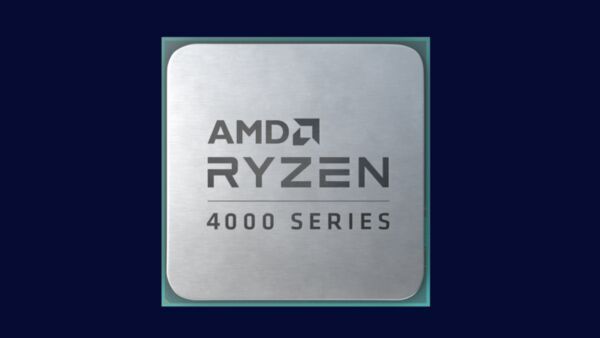
AMD Ryzen 4000 Series Desktop Processors with AMD Radeon Graphics Set to Deliver Breakthrough Performance for Commercial and Consumer Desktop PCs
"Today, AMD announced the world’s first and most advanced 7nm x86 desktop processors with built-in graphics for consumer and commercial PC markets2. The AMD Ryzen™ 4000 Series Desktop Processors with Radeon™ Graphics and the AMD Athlon™ 3000 Series Desktop Processors with Radeon™ Graphics feature the most advanced processor core technology1 on the market combined with the best graphics performance available in a desktop processor. The new AMD Ryzen™ 4000 G-Series Desktop Processors deliver impressive generational leaps in performance3 and amazing power efficiency for consumers, gamers, streamers and creators. Built for modern business PCs, AMD Ryzen 4000 Series Desktop Processors with PRO technologies offer enterprise-class solutions, advanced technology and multi-layered security features. Ryzen 4000 Series Desktop Processors are built on the industry-leading 7nm process and “Zen 2” core architecture, offering unmatched user experiences and power efficiency in the state-of-the art AMD socket AM4 platform. “AMD is dedicated to continuously pushing the boundaries of processing power and graphics performance to deliver amazing PC experiences for all customers, from mainstream PC users, to gamers, streamers and enterprise users,” said Saeid Moshkelani, senior vice president and general manager, client business unit, AMD." [...]
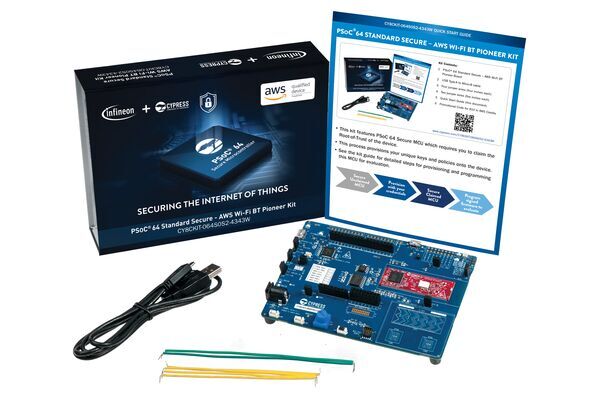
Cypress Ships Secure IoT Device Management Solution with AWS Integration
"PSoC® 64 Standard Secure AWS MCU Includes Pre-Validated Security Firmware to Help Reduce Design Risks, Slash R&D Costs, and Accelerate Time-to-Market SAN JOSE, Calif., July 21, 2020—Cypress, an Infineon Technologies company, today announced production availability of its PSoC 64 Standard Secure Amazon Web Services (AWS) microcontroller (MCU). This new MCU includes pre-validated security firmware that helps designers significantly reduce design risks and R&D costs, and accelerate time-to-market. Building on the previously announced PSoC 64 Secure Boot MCU family, the device incorporates open-sourced Trusted Firmware-M embedded security, is Platform Security Architecture (PSA) Certified Level 1, and is FreeRTOS qualified for secure device management with AWS IoT Core. ISO-certified secure provisioning services for the PSoC 64 Standard Secure AWS MCU are offered by Arrow Electronics, enabling OEMs to securely deploy IoT applications at scale. “End-user privacy requires secure device management,” said Vikram Gupta, senior vice president of IoT Compute and Wireless business unit at Cypress. “As the newest component of our IoT-AdvantEdge solutions, the PSoC 64 Standard Secure AWS MCU eliminates design risks, and directly addresses the cost-of-ownership issues that development teams face when building their secure device management service.” “It is critical that IoT devices can be trusted when connecting at any scale,” said Richard Barry, FreeRTOS founder and senior principal SDE of IoT Device Services, at Amazon Web Services, Inc. “With the PSoC 64 Standard Secure AWS MCU, Cypress integrates Trusted Firmware-M with FreeRTOS security and connectivity libraries." [...]
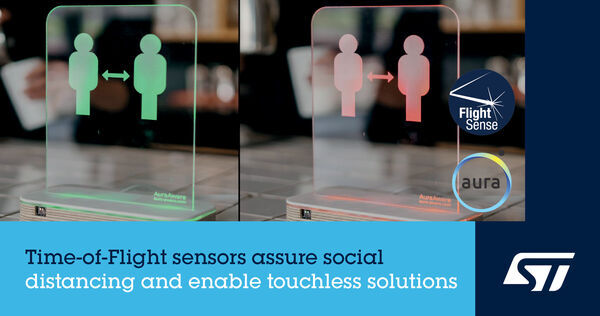
STMicroelectronics Enables Innovative Social-Distancing Applications with FlightSense™ Time-of-Flight Proximity Sensors
"High-accuracy FlightSense™ proximity and ranging sensors from STMicroelectronics (NYSE: STM), a global semiconductor leader serving customers across the spectrum of electronics applications, are helping prevent disease transmission in innovative products developed by customers in response to the global pandemic situation. Amsterdam-based startup Aura Aware is using ST’s FlightSense Time-of-Flight (ToF) technology in a smart distance-awareness portable device suitable for use at retail counters and check-in desks. The easy-to-setup device displays a green OK signal that changes to red if a person crosses a safe minimum-distance threshold. “This innovative device from Aura Aware shows a highly creative use of our FlightSense technology. ST’s ToF sensors can help protect our health in many ways, ensuring both social distancing and touchless interaction with all kinds of products that we use every day,” said David Maucotel, Business Line Director, Imaging, STMicroelectronics. Aura Aware devices integrate ST’s VL53L1X compact ToF sensor, which has an operating range of up to four meters and very low power consumption." [...]
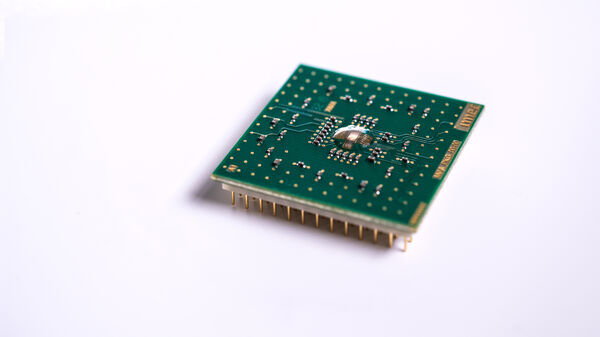
Imec and GLOBALFOUNDRIES Announce Breakthrough in AI Chip, Bringing Deep Neural Network Calculations to IoT Edge Devices
"Imec, a world-leading research and innovation hub in nanoelectronics and digital technologies, and GLOBALFOUNDRIES® (GF®), the world’s leading specialty foundry, today announced a hardware demonstration of a new artificial intelligence chip. Based on imec’s Analog in Memory Computing (AiMC) architecture utilizing GF’s 22FDX® solution, the new chip is optimized to perform deep neural network calculations on in-memory computing hardware in the analog domain. Achieving record-high energy efficiency up to 2,900 TOPS/W, the accelerator is a key enabler for inference-on-the-edge for low-power devices. The privacy, security and latency benefits of this new technology will have an impact on AI applications in a wide range of edge devices, from smart speakers to self-driving vehicles Since the early days of the digital computer age, the processor has been separated from the memory. Operations performed using a large amount of data require a similarly large number of data elements to be retrieved from the memory storage. This limitation, known as the von Neumann bottleneck, can overshadow the actual computing time, especially in neural networks – which depend on large vector matrix multiplications." [...]
Ciência e Tecnologia
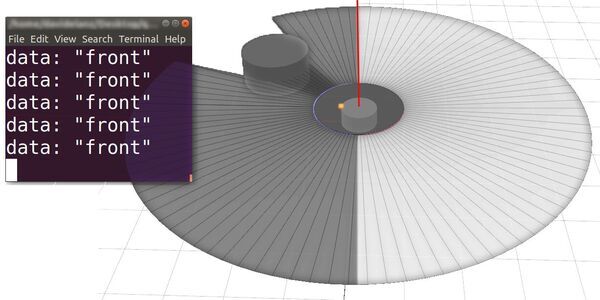
Using a quantum-like model to enable perception in robots with limited sensing capabilities
"Over the past few years, researchers have been trying to apply quantum physics theory to a variety of fields, including robotics, biology and cognitive science. Computational techniques that draw inspiration from quantum systems, also known as quantum-like (QL) models, could potentially achieve better performance and more sophisticated capabilities than more conventional approaches. Researchers at University of Genoa, in Italy, have recently investigated the feasibility of using a QL approach to enhance a robot's sensing capabilities. In their paper, pre-published on arXiv, they present the results of a case study where they tested a QL perception model on a robot with limited sensing capabilities within a simulated environment. "The idea for this study came to me after reading an article written in 1993 by Anton Amann, ('The Gestalt problem in quantum theory') in which he compared the problem of Gestalt perception with the attribution of molecular shape in quantum physics," Davide Lanza, one of the researchers who carried out the study, told TechXplore. "I was amazed by this parallel between cognition and quantum phenomena, and I discovered then the flourishing field of quantum cognition studies."" [...]
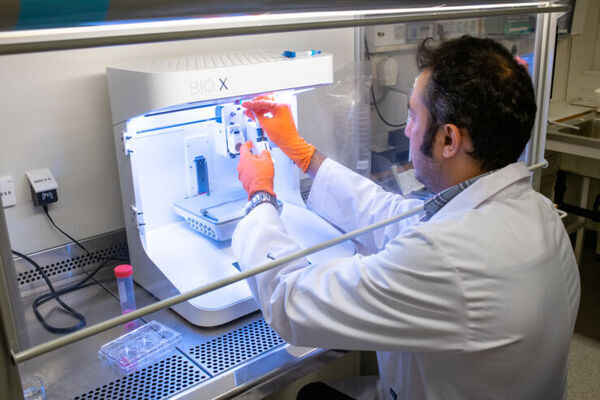
New bioink for cell bioprinting in 3D
"A research group led by Daniel Aili, associate professor at LiU, has developed a bioink to print tissue-mimicking material in 3D printers. The scientists have developed a method and a material that allow cells to survive and thrive. “Bioprinting is a new and exciting technology to manufacture three-dimensional tissue-mimicking cell cultures. It has been a major problem to develop the bioink required, i.e. a material that can encapsulate the cells and be used in printers. Our bioink has several exciting properties that open new opportunities to approach our vision – creating tissue and organs in the laboratory”, says Daniel Aili, associate professor in the Division of Biophysics and Bioengineering at Linköping University." [...]
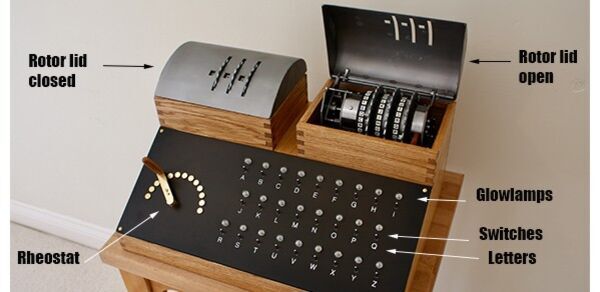
Enigma code-breaking machine rebuilt at Cambridge
"Cambridge Engineering alumnus Hal Evans has built a fully-functioning replica of a 1930s Polish cyclometer – an electromechanical cryptologic device that was designed to assist in the decryption of German Enigma ciphertext. The replica currently resides in King’s College, Cambridge. Work on the hardware-based replica began in 2018, as part of Hal’s fourth year Master’s project under the supervision of King's College Fellow and Senior Tutor Dr Tim Flack. The aim was to investigate further into cryptologist Marian Rejewski's cyclometer – an early forerunner to Cambridge University mathematician Alan Turing’s machine, known as the Bombe, which was used to crack the German Enigma code during the Second World War. Hal said he chose to work on the cyclometer as it was the very first machine used to assist the decryption effort. To his knowledge, the replica is the first fully-functioning hardware-based electromechanical cyclometer to exist since the years preceding the Second World War." [...]
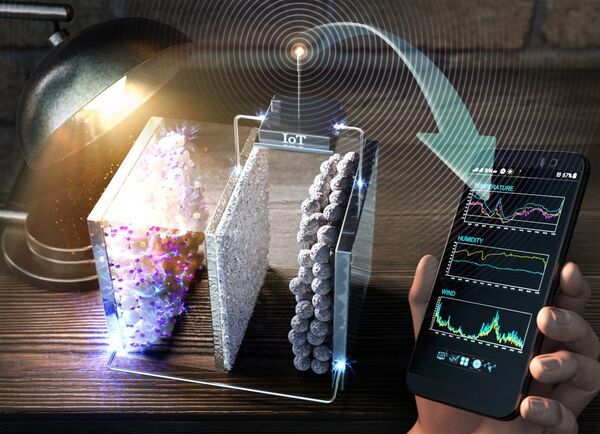
New Study Presents Indoor-light-energy-harvesting Dye-sensitized Photo-rechargeable Battery
"Their findings have been published in Energy & Environmental Science on May 20, 2020. A new rechargeable battery that can be charged wirelessly using light from indoor sources, like desk lamps has been developed. This will enable the so-called ‘Energy Recycling,’ which refers to the energy recovery process of utilizing indoor lights that would normally be wasted, by converting it into electricity. A joint research team, led by Professor Hyun-Kon Song (School of Energy and Chemical Engineering) and Professor Tae-Hyuk Kwon (Department of Chemistry) has presented an external-power-free single-structured PRB, named a dye-sensitized photo-rechargeable battery (DSPB) with an outstanding light-to-charge energy efficiency (ηoverall) of 11.5% under the dim light condition. Researchers have also succeeded in demonstrating the ability of the DSPB to operate a temperature-sensing IoT device only by indoor lights, and thus opening the possibility of realizing indoor-light-harvesting PRBs. “Lighting accounts for about 10% of total commercial sector electricity consumption, and thus we expect that the energy recycling effect of that will be enormous,” says Professor Song." [...]
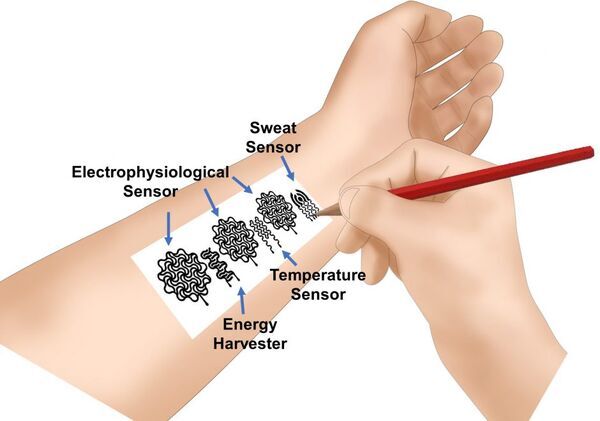
The new tattoo: Drawing electronics on skin
"One day, people could monitor their own health conditions by simply picking up a pencil and drawing a bioelectronic device on their skin. In a new study, University of Missouri engineers demonstrated that the simple combination of pencils and paper could be used to create devices that might be used to monitor personal health. Their findings are published in the journal Proceedings of the National Academy of Sciences. Zheng Yan, an assistant professor in the College of Engineering, said many existing commercial on-skin biomedical devices often contain two major components — a biomedical tracking component and a surrounding flexible material, such as plastic, to provide a supportive structure for the component to maintain an on-skin connection with a person’s body. “The conventional approach for developing an on-skin biomedical electronic device is usually complex and often expensive to produce,” he said. “In contrast, our approach is low-cost and very simple." [...]
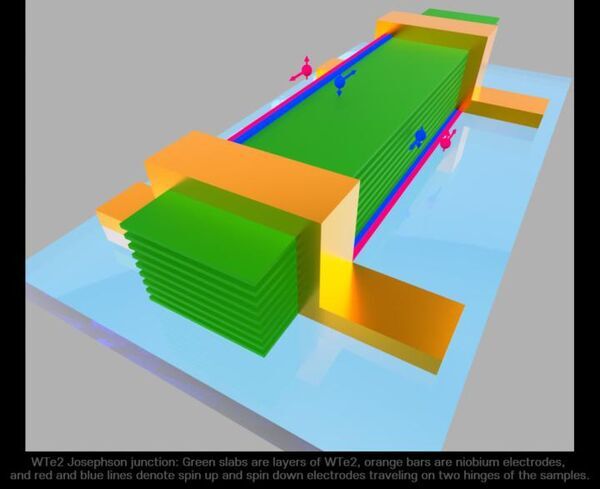
Higher-order topology found in 2D crystal
"Over the last decade, the field of condensed matter physics has experienced a golden age with the discovery of new materials and properties, and related technologies being developed at breakneck speed thanks to the arrival of topological physics. Topological physics took off in 2008 with the discovery of topological insulator, a type of material that is electrically insulating in the bulk but metallic on the surface. Since then, scientists have found more exotic topological phases including Dirac semimetals, Weyl semimetals and Axionic insulators. But most recently, materials that are insulating in the bulk, on surfaces and edges but are metallic only on the hinges or at the corners have been theoretically predicted. These bizarre new materials called higher-order topological insulators are extremely rare and only the element bismuth has been experimentally proven to possibly belong to this category so far. What is a hinge state anyway?" [...]

Chemists make tough plastics recyclable
"New method for producing thermoset plastics allows them to be broken down more easily after use. Thermosets, which include epoxies, polyurethanes, and rubber used for tires, are found in many products that have to be durable and heat-resistant, such as cars or electrical appliances. One drawback to these materials is that they typically cannot be easily recycled or broken down after use, because the chemical bonds holding them together are stronger than those found in other materials such as thermoplastics. MIT chemists have now developed a way to modify thermoset plastics with a chemical linker that makes the materials much easier to break down, but still allows them to retain the mechanical strength that makes them so useful. In a study appearing today in Nature, the researchers showed that they could produce a degradable version of a thermoset plastic called pDCPD, break it down into a powder, and use the powder to create more pDCPD. They also proposed a theoretical model suggesting that their approach could be applicable to a wide range of plastics and other polymers, such as rubber." [...]
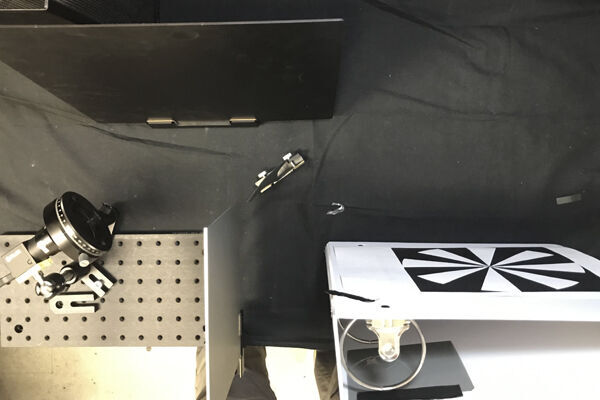
Engineering Researchers Develop New Camera System to See Around Corners
"Breakthrough could lead to technologies that help cars avoid hidden obstacles and doctors see better detail A UCLA engineering professor and two colleagues in Japan have developed a new camera that can see around corners. The camera takes advantage of the same phenomenon one observes when looking through polarized sunglasses. The research paper was presented at the 2020 edition of the Conference on Computer Vision and Pattern Recognition (CVPR), the top international venue for the field. “Seeing around corners has been a superpower that is recently becoming possible,” said Achuta Kadambi, an assistant professor of electrical and computer engineering and an author of the study. “If the technology can be successfully applied to cameras enabling them to see around corners, it could help autonomous cars avoid accidents at blind spots, or allow biomedical engineers to create endoscopes that can help doctors see around organs.” The paper’s other co-authors are Kenichiro Tanaka and Yasuhiro Mukaigawa, both professors at the Nara Institute of Science in Technology, Japan. To see around corners, one needs to somehow make an ordinary wall into what is effectively a mirror — that is, a surface which reflects its surroundings." [...]
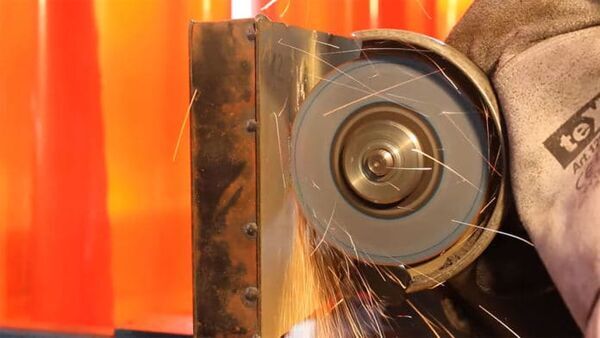
Nature inspires first manufactured non-cuttable material
"Our engineers have been inspired by nature to create what they say is the first manufactured non-cuttable material. They got the idea for the new lightweight material from the tough cellular skin of the grapefruit and the fracture resistant shells of the abalone sea creature. The material – called Proteus after the shape-changing mythical god – could be used in the security and health and safety industries. Metallic foam It’s made from alumina ceramic spheres encased in a cellular aluminium, metallic foam structure and works by turning back the force of a cutting tool on itself. In tests Proteus could not be cut by angle grinders, drills or high-pressure water jets. When cut with an angle grinder or drill, the interlocking vibrational connection created by the ceramic spheres inside the casing blunts the cutting disc or drill bit." [...]

New Process Enables Lithium Mining in Germany
"Scientists at KIT achieve patent protection for minimally invasive technology to mine lithium in geothermal plants Whether grid energy storage, electromobility or wearable electronics – lithium-ion batteries have become an integral part of our lives. Millions of tons of lithium are mined in places far away from Germany to produce them every year. However, an invention made by scientists at Karlsruhe Institute of Technology (KIT) might now also enable economic mining in this country. The plan is to extract lithium using a minimally invasive process from the deep waters in geothermal plants of the Upper Rhine Trench. A mineral treasure is hidden in rock formations deeply below the Upper Rhine Trench: dissolved in salty thermal water reservoirs, considerable quantities of the element lithium are waiting to be exploited. “As far as we know, there can be up to 200 milligrams per liter,” says geoscientist Dr. Jens Grimmer from the Institute of Applied Geosciences (AGW) of KIT: "If we consistently use this potential, we could cover a considerable part of the demand in Germany.” Currently, Germany is a net importer of the coveted resource that is mainly needed for the production of battery cells for electric vehicles and is thus of great importance for the climate protection program of the Federal Government." [...]
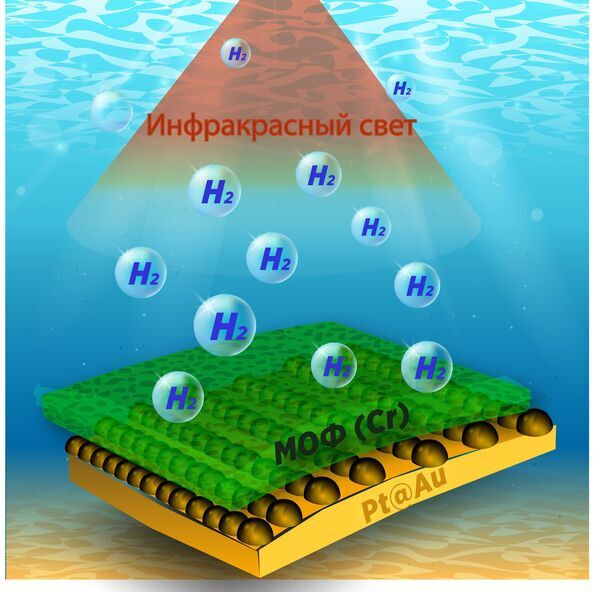
New Material Can Generate Hydrogen from Salt and Polluted Water
"Scientists of Tomsk Polytechnic University jointly with teams from the University of Chemistry and Technology, Prague and Jan Evangelista Purkyne University in Ústí nad Labem have developed a new 2D material to produce hydrogen, which is the basis of alternative energy. The material efficiently generates hydrogen molecules from fresh, salt, and polluted water by exposure to sunlight. The results are published in ACS Applied Materials & Interfaces (IF: 8,758; Q1). “Hydrogen is an alternative source of energy. Thus, the development of hydrogen technologies can become a solution to the global energy challenge. However, there are a number of issues to solve." [...]
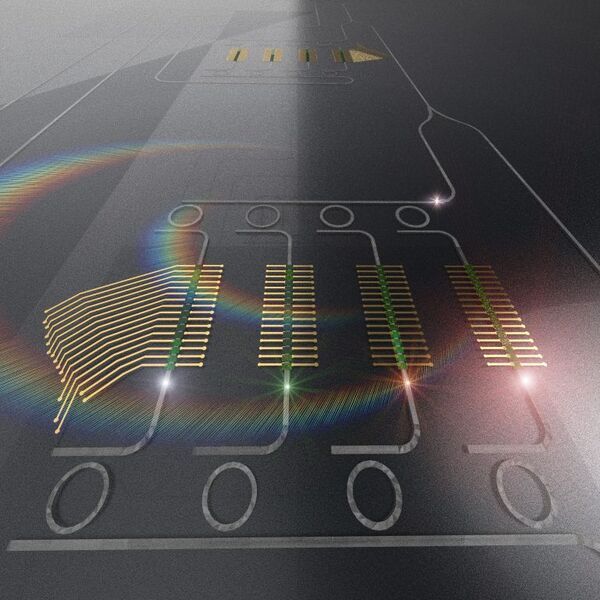
Photon-Based Processing Units Enable More Complex Machine Learning
"Machine learning performed by neural networks is a popular approach to developing artificial intelligence, as researchers aim to replicate brain functionalities for a variety of applications. A paper in the journal Applied Physics Reviews, by AIP Publishing, proposes a new approach to perform computations required by a neural network, using light instead of electricity. In this approach, a photonic tensor core performs multiplications of matrices in parallel, improving speed and efficiency of current deep learning paradigms. In machine learning, neural networks are trained to learn to perform unsupervised decision and classification on unseen data. Once a neural network is trained on data, it can produce an inference to recognize and classify objects and patterns and find a signature within the data. The photonic TPU stores and processes data in parallel, featuring an electro-optical interconnect, which allows the optical memory to be efficiently read and written and the photonic TPU to interface with other architectures." [...]
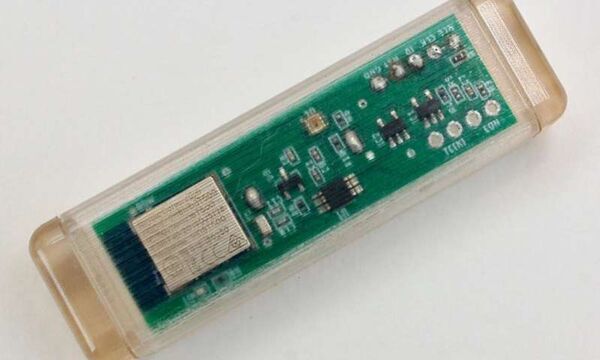
Digitizing chemistry with a smart stir bar
"Miniaturized computer systems and wireless technology are offering scientists new ways to keep tabs on reactions without the need for larger, cumbersome equipment. In a proof-of-concept study in ACS Sensors, researchers describe an inexpensive new device that functions like a conventional magnetic stir bar, but that can automatically measure and transmit information on a solution’s color, viscosity and a variety of other attributes to a smart phone or computer. Automatic, remote data collection can make chemical processes more reliable, as well as less labor intensive and safer. This technology has begun to make inroads into chemistry labs, but options for scientists looking to remotely mix their reactions and monitor several parameters while those reactions occur remain quite scarce, limited and expensive. Nikolay Cherkasov, Dmitry Isakov and colleagues wanted to develop a device capable of simultaneously detecting numerous parameters using freely available open source software and easy-to-get, inexpensive components. The team made two versions of the Smart Stirrer based on different integrated circuits, one a microcontroller and the other an all-in-one system on a chip." [...]
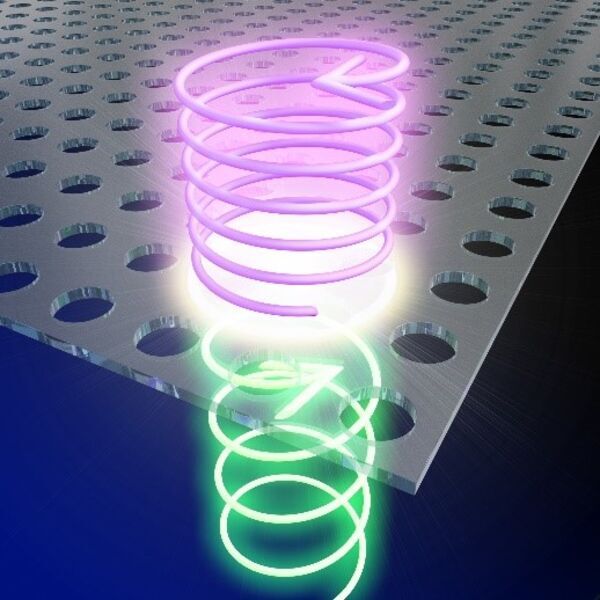
Photonic crystal light converter
"A new device could be a powerful tool for observation in physics and life sciences Spectroscopy is the use of light to analyze physical objects and biological samples. Different kinds of light can provide different kinds of information. Vacuum ultraviolet light is useful as it can aid people in a broad range of research fields, but generation of that light has been difficult and expensive. Researchers created a new device to efficiently generate this special kind of light using an ultrathin film with nanoscale perforations. The wavelengths of light you see with your eyes constitute a mere fraction of the possible wavelengths of light that exist. There’s infrared light which you can feel in the form of heat, or see if you happen to be a snake, that has a longer wavelength than visible light." [...]

New 'super light source' should allow fascinating insights into atoms
"International team of scientists with Mainz participation proposes plans for high-intensity gamma radiation source at CERN The 'Gamma Factory initiative' – an international team of scientists – is currently exploring a novel research tool: They propose to develop a source of high-intensity gamma rays using the existing accelerator facilities at CERN. To do this, specialized ion beams will be circulated in the SPS and LHC storage rings, which will then be excited using laser beams so that they emit photons. In the selected configuration, the energies of the photons will be within the gamma radiation range of the electromagnetic spectrum. This is of particular interest in connection with spectroscopic analysis of atomic nuclei. Furthermore, the gamma rays will be designed to have a very high intensity, several orders of magnitude higher than those of systems currently in operation. In the latest issue of the journal Annalen der Physik, the researchers claim that a 'Gamma Factory' constructed in this way will enable not only breakthroughs in spectroscopy but also novel ways of testing fundamental symmetries of nature." [...]
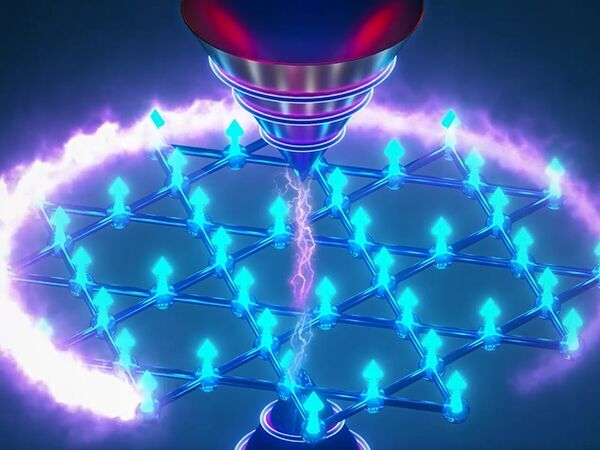
Princeton scientists discover a topological magnet that exhibits exotic quantum effects
"An international team led by researchers at Princeton University has uncovered a new class of magnet that exhibits novel quantum effects that extend to room temperature. The researchers discovered a quantized topological phase in a pristine magnet. Their findings provide insights into a 30-year-old theory of how electrons spontaneously quantize and demonstrate a proof-of-principle method to discover new topological magnets. Quantum magnets are promising platforms for dissipationless current, high storage capacity and future green technologies. The study was published in the journal Nature this week. The arrows represent the electron spins pointing up from a kagome lattice." [...]
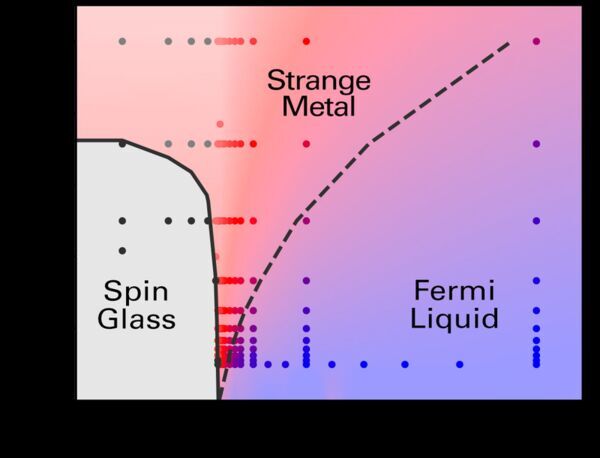
Quantum Physicists Crack Mystery of ‘Strange Metals,’ a New State of Matter
"Strange metals have surprising connections to high-temperature superconductors and black holes. Even by the standards of quantum physicists, strange metals are just plain odd. The materials are related to high-temperature superconductors and have surprising connections to the properties of black holes. Electrons in strange metals dissipate energy as fast as they’re allowed to under the laws of quantum mechanics, and the electrical resistivity of a strange metal, unlike that of ordinary metals, is proportional to the temperature. Generating a theoretical understanding of strange metals is one of the biggest challenges in condensed matter physics. Now, using cutting-edge computational techniques, researchers from the Flatiron Institute in New York City and Cornell University have solved the first robust theoretical model of strange metals." [...]
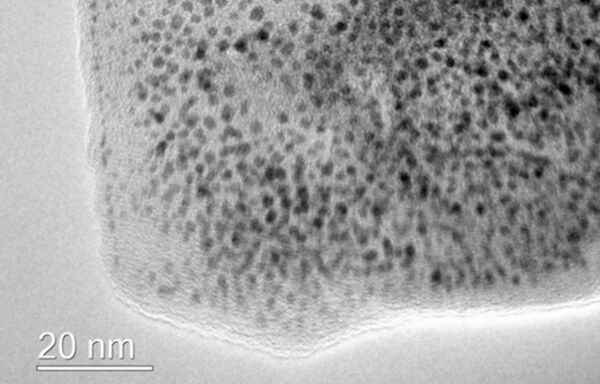
Scientists develop new material for longer-lasting fuel cells
"In the study, published today in the journal Nanoscale, researchers produced graphene via a special, scalable technique and used it to develop hydrogen fuel cell catalysts. They showed that this new type of graphene-based catalyst was more durable than commercially available catalysts and matched their performance. Hydrogen fuel cells convert chemical energy into electrical power by combining hydrogen and oxygen with the aid of catalysts. As the only by-product of the reaction is water, they provide an efficient and environmentally friendly power source. Platinum is the most widely used catalyst for these fuel cells, but its high cost is a big problem for the commercialisation of hydrogen fuel cells. To address this issue, commercial catalysts are typically made by decorating tiny nanoparticles of platinum onto a cheaper carbon support, however the poor durability of the material greatly reduces the lifetime of current fuel cells." [...]
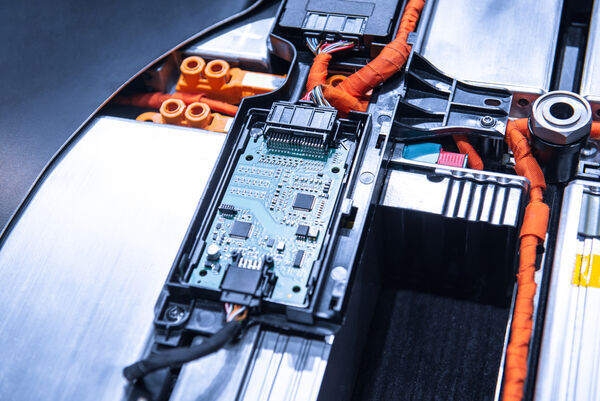
Sodium Can Replace Lithium in Batteries
"An international team of scientists from NUST MISIS, Russian Academy of Science and the Helmholtz-Zentrum Dresden-Rossendorf found that instead of lithium (Li), sodium (Na) “stacked” in a special way can be used for batteries production. Sodium batteries will be significantly cheaper and equivalently or even more capacious. An article about the study is published in the journal Nano Energy. It is hard to overestimate the role of lithium, or rather, Li-ion batteries in our lives. These batteries are used everywhere: in mobile phones, laptops, cameras, as well as in various types of vehicles and space shipes. Li-ion batteries entered the market in 1991, and in 2019 their inventors were awarded the Nobel Prize in chemistry — for their revolutionary contribution to the development of technology." [...]
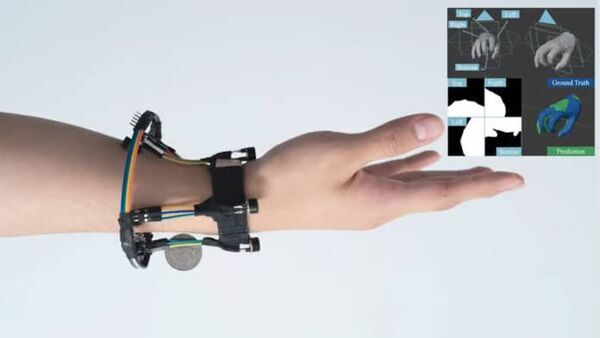
Researchers Develop 3d Hand-sensing Wristband Using Uw Software
"Researchers from Cornell and the University of Wisconsin–Madison have designed a wrist-mounted device and developed software that allows continuous tracking of the entire human hand in three dimensions. The research team views the bracelet, called FingerTrak, as a potential breakthrough in wearable sensing technology with applications in areas such as mobile health, human-robot interaction, sign language translation, and virtual reality. The device senses and translates into three-dimensional coordinates the many positions of the human hand using three or four miniature, low-resolution thermal cameras that read contours of the wrist. “This was a major discovery by our team – that by looking at your wrist contours, the technology could reconstruct in 3D, with keen accuracy, where your fingers are,” said Cheng Zhang, assistant professor of information science and director of Cornell’s new SciFi Lab, where FingerTrak was developed. “It’s the first system to reconstruct your full hand posture based on the contours of the wrist.” Yin Li, assistant professor of biostatistics and medical informatics at the UW School of Medicine and Public Health, contributed to the software behind FingerTrak. “Our team had developed a computer vision algorithm using deep learning, which enables the reconstruction of 3D hand from multiple thermal images,” Li said." [...]
New detection method turns silicon cameras into mid-infrared detectors
"The MIR range of the electromagnetic spectrum, which roughly covers light in the wavelength regime between 3 to 10 micrometers, coincides with the energies of fundamental molecular vibrations. Utilizing this light for the purpose of imaging can produce stills with chemical specificity, i.e. images with contrast derived from the chemical composition of the sample. Unfortunately, detecting MIR light is not as simple as detecting light in the visible regime. Current MIR cameras exhibit excellent sensitivity but are very sensitive to thermal noise. In addition, the fastest MIR cameras suitable for chemical mapping have sensors with low pixel numbers, thus limiting imaging at high definition." [...]
Documentação
A documentação é parte essencial do processo de aprendizagem e a Internet além de artigos interessantes de explorar também tem alguma documentação em formato PDF interessante de ler. Todos os links aqui apresentados são para conteúdo disponibilizado livremente pelo editor do livro.
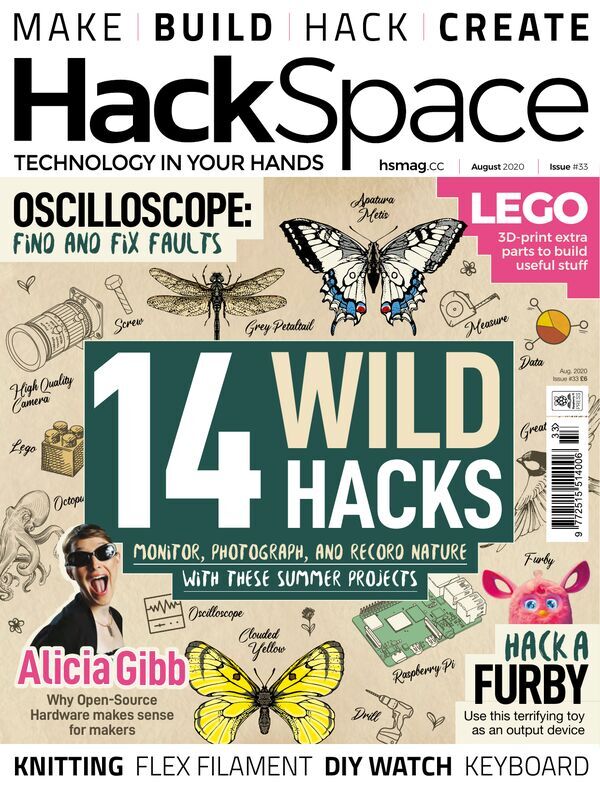
HackSpace magazine #33
"Nature is the ultimate maker, and this issue we’re looking at hacks that work with the natural world whether that’s to study it, help protect it, or just generally take in its beauty. Discover an Arduino-compatible watch Find out what’s great about open source hardware Fix circuits with an oscilloscope Hack a furby" [...]
Projetos Maker
Diversos Projetos interessantes.
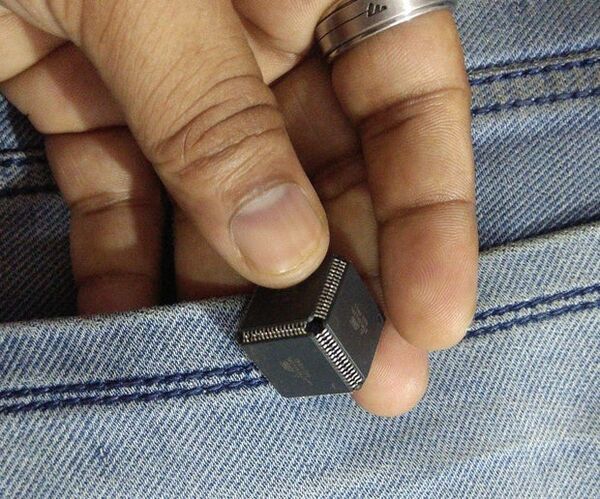
Magic Cube or Micro-controller Cube
_"In this Instructables, I will show you how to make a Magic cube from faulty Micro-controller. this idea is come from when I have take Faulty ATmega2560 micro-controller from Arduino Mega 2560 and make a cube. About Magic Cube hardware, i have make a simple circuit with mercury switch. mercury switch is ON/OFF at special angle. Three Use of magic Cube as Anti-Stress Device, Dice and Key-chain are explain following....... ** Anti-Stress Device :- Cubic shape and blinking light to attract the people. **Dice :- Blinking LED is ON at numbers 6, 5, 1 and Blinking LED is OFF at numbers 4, 3, 2."_ [...]
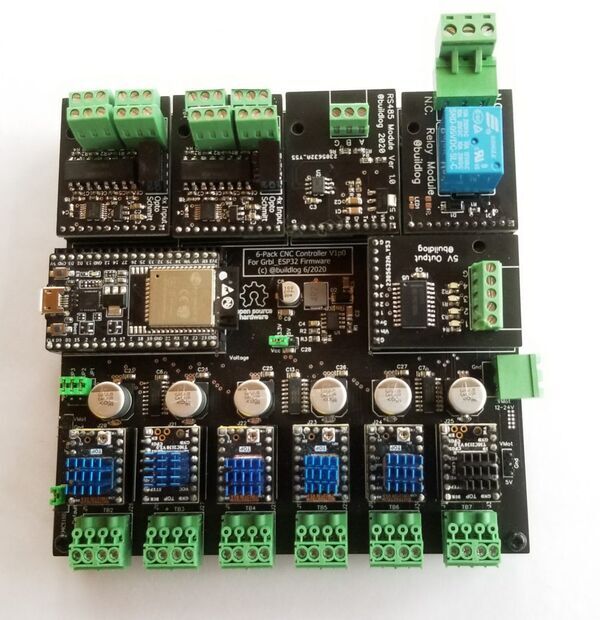
A New, Fully Modular CNC Controller
"The blog post details a new CNC controller I designed. I have probably designed 40-50 different controllers over the years, but this one has me really excited. My past controllers were generally application specific. My recent controllers have all been for the Grbl_ESP32 firmware. The I/O on the ESP32 is very flexible, but somewhat limited in pin count. There have always been enough pins to control the machine, but not enough to make a general purpose CNC controller that can target any machine." [...]
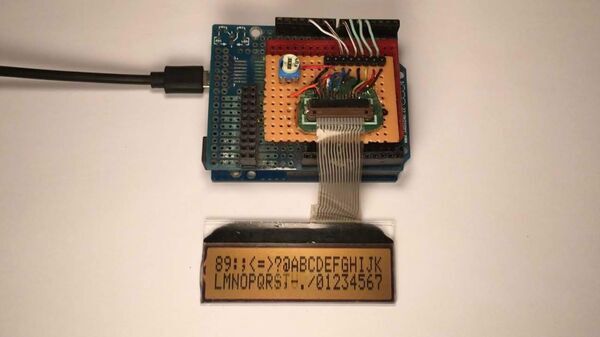
Displaying smooth-scrolling text on old character LCDs
"Character LCDs have been around for a long time. These displays contain a number of discinct blocks—each capable of displaying a single character—so displaying scrolling text would traditionally involve just shifting characters left one block at a time. That’s fine and all, but why not try and raise the bar.. 😏 Hardware Most character displays utilise the Hitachi HD44780 controller chip, which has the neat feature of letting us define and use up to eight custom characters, each 5x8 pixels in size. Mine uses this chip, so I’ll be taking advantage of repeatedly rendering custom characters to pull off smooth scrolling text. I connected an Arduino Leonardo to my salvaged display over its 4-bit interface, and got to work on the software side. Software As we use an Arduino, the software written is in C++." [...]
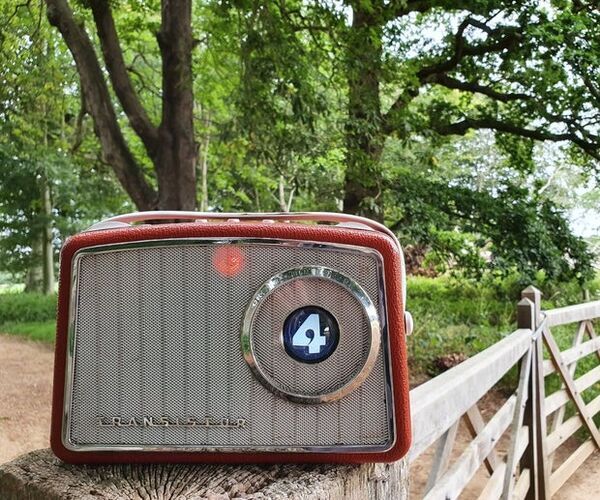
1964 Dansette Pi Internet Radio
"This stylish mid-1960s Dansette portable radio is now playing the 21st century's finest internet radio stations thanks to a loving upgrade. All of the original controls have been re-used, and you'd never know it's a conversion - until you turn it on! The centre of the tuning dial has been replaced with a bright LCD display showing the icon for the current radio station, with a convex glass bubble lens adding to the vintage aesthetic. The trio of clicky little buttons on top control the power and let you skip up or down through a set of eight station presets. The dials peeping out at each corner are actually large, tactile micro-switch buttons for precisely controlling the volume. On the inside is a Raspberry Pi, with a Pirate Audio board handling the display and amplification, and a 10,000 mAh power bank supplying plenty of juice for long summer afternoons in the garden." [...]
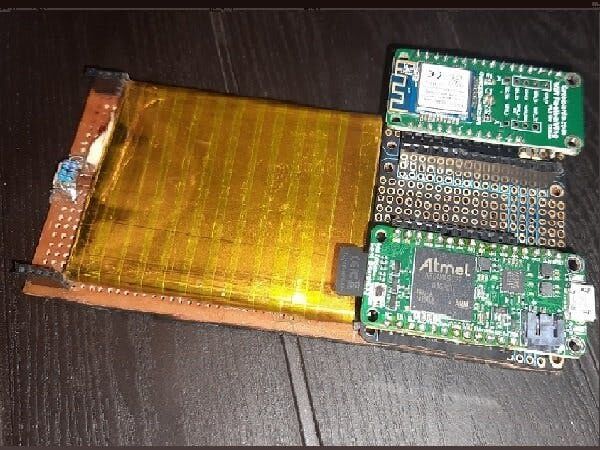
Wireless Linux Data Logger
"Giant Board is a single-board computer based on Arm Cortex-A5 SAMA5D27 microprocessor that runs at 500 MHz. It consumes about 140 mAh current when powered from a 3.7 V Lipo battery. Goal of this project : Prepare hardware for the project before working with software Setup micro SD card with Debian Linux image using Balena Etcher program Login into Giant Board with Putty Terminal over USB-Serial Enable overlay for ADC and WiFi support Setup WiFi FeatherWing for Giant Board Install SSH on Giant Board Connect and login to Giant Board wirelessly over Wifi-SSH Read ADC wirelessly Logging data on a text file with timestamp" [...]
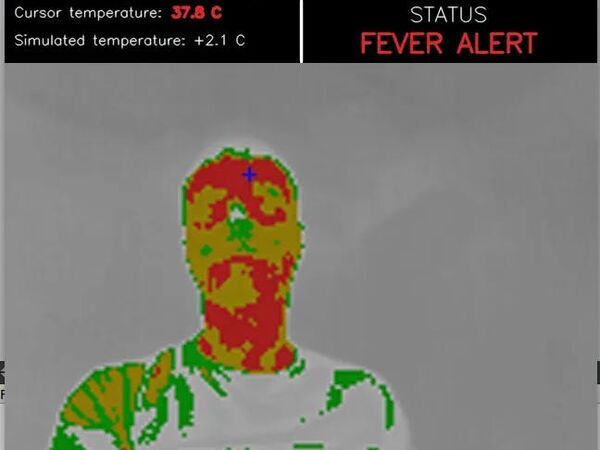
COVID19 - Fever Control with Jetson Nano and FLIR Lepton3
"In the far 2017 I partecipated (and won) to a challenge promoted by FLIR and the BeagleBoard.org Foundation.I used a FLIR Lepton3 module and a BeagleBone Blue to detect and track people using their temperature. This year, the year of COVID19, I decided to get that project out of the drawer and to adapt it to Nvidia Jetson Nano to realize an application to control human body temperature and issue alerts in case of fever. FLIR Lepton 3 The FLIR Lepton3 communicates with the host using two different communication channels: I2C to control the sensor settings SPI to send thermal image data The breakout board The FLIR Lepton3 module requires a breakout board to connect it to our device. I use the GroupGets FLIR breakout board v1.4. All required Lepton system voltages, I2C pullups, and clocking is provided by this board so you can focus on your application software and not the Lepton setup hardware. Recently the new breakout board v2 has been released with an useful VSINC signal and other useful features, that allow to realize more stable communication drivers." [...]
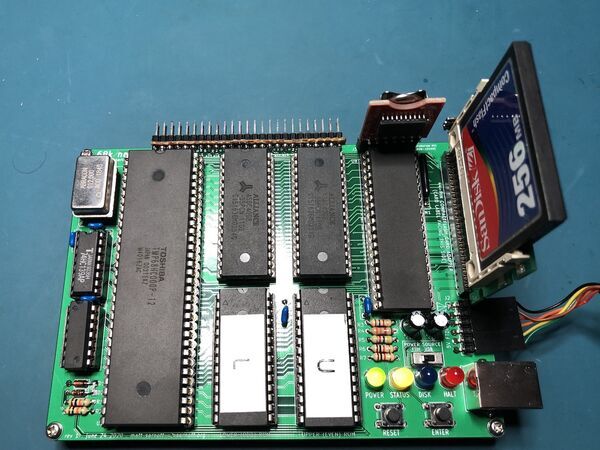
68k nano
"A minimal single-board computer based on the venerable "Texas Cockroach" Motorola 68000 16/32-bit microprocessor. Features 68HC000 processor running at 12MHz 1MB RAM 64KB ROM 16550 UART providing a 5V FTDI serial port 44-pin IDE connector for CompactFlash card adapter Connector for SparkFun DS3234 real-time clock Only two 74HC glue logic chips required This might be capable of running uClinux, but I haven't tried it! Hardware The 68k nano hardware is simple and straightforward. It can be built on a breadboard (though there may be stability issues at higher clock speeds). " [...]
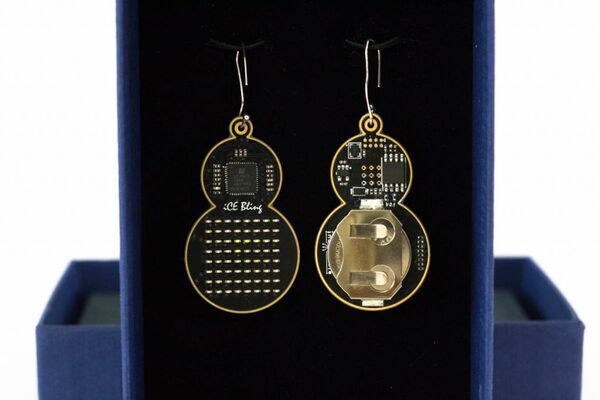
iCE Bling FPGA – Beautiful LED Earrings with Lattice iCE40
"It’s the same story every year. At the horizon is a loved one’s birthday, or an anniversary, and I want to make them something special. Buying something won’t do. Oh no, I have to design and build it myself. I would then start with a simple idea, and then complicate it progressively to the point where it would take several anniversaries to finish the project. This time, I wanted to build a pair of earrings for my wife’s birthday." [...]
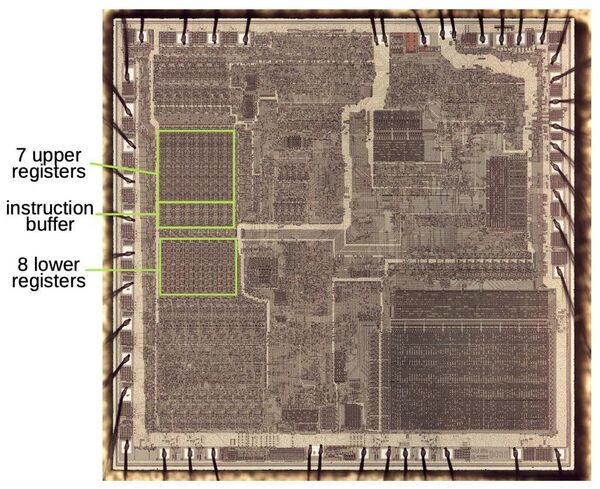
The Intel 8086 processor's registers: from chip to transistors
"The Intel 8086 microprocessor is one of the most influential chips ever created; it led to the x86 architecture that dominates desktop and server computing today. I've been reverse-engineering the 8086 from die photos, and in this post I discuss how its register file is implemented. The photo above shows the silicon die of the 8086 processor under a microscope. The metal layer on top of the chip is visible, with the silicon hidden underneath. Around the outside edge, bond wires connect pads on the die to the chip's 40 external pins. The highlighted region indicates the 8086's fifteen 16-bit registers and six bytes of instruction prefetch queue.1 Registers take up a significant portion of the die, even though they are just 36 bytes in total." [...]
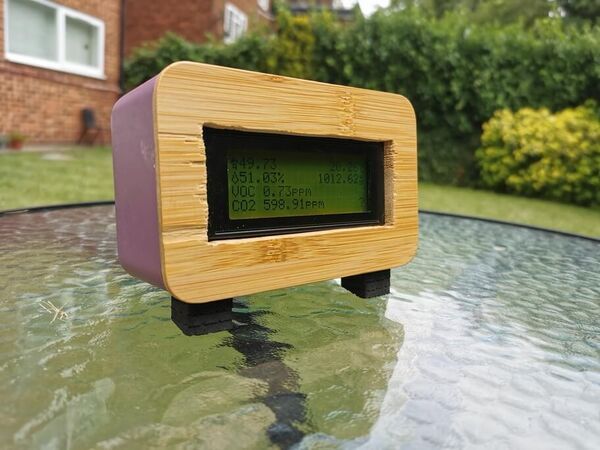
Embedded Meets the Internet: Build Your Own Air Quality Meter
"I’m bored. I’m sure you are too. I’m personally very thankful that I can still work through this strange period - but there are still hours in the day to fill. I wanted a personal project, so I thought about remote working and the health impacts. Most offices here have air handling units, air conditioners, and fans to keep air circulating. Most residential flats like the one I rent do not." [...]
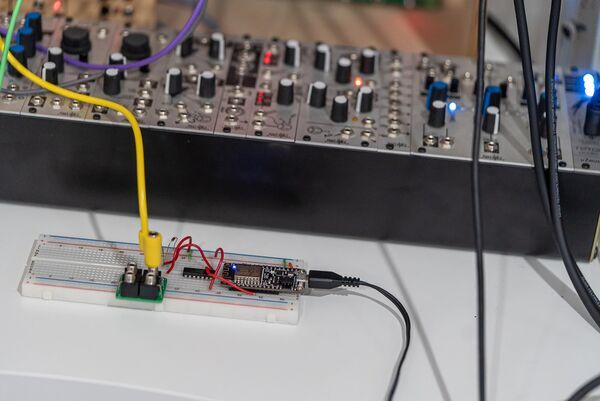
Using Modular Synth to Control Atem Camera Switching over WiFi using ESP8266
"I've been wanting to control my camera switching from my modular synth. So I made a setup where a low to high transition on a digital input on an ESP8266 module generates an OSC message on the WiFi network for the ATEM Mini Pro switcher to change cameras. Here, it's triggered from the kick but it could be any clock, gate or trigger signal. Makes use of atemOSC. " [...]
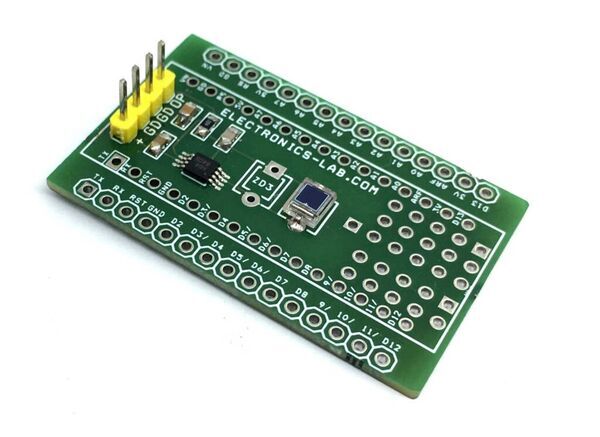
Photodiode Amplifier for Visible Light Using OPA381 – Arduino Nano Shield
"The project presented here is a photodiode amplifier for visible light. The output voltage of the circuit increases linearly with light intensity. Low-cost BPW34 photodiode is used as a light sensor and OPA381 op-amp as an amplifier. OPA381 is a transimpedance amplifier that converts photodiode current flow into voltage. The operating voltage of this circuit is 5V DC, and output ranges to almost 0V to 4.5V DC. The project can be used to make a LUX meter and other photo lab equipment." [...]
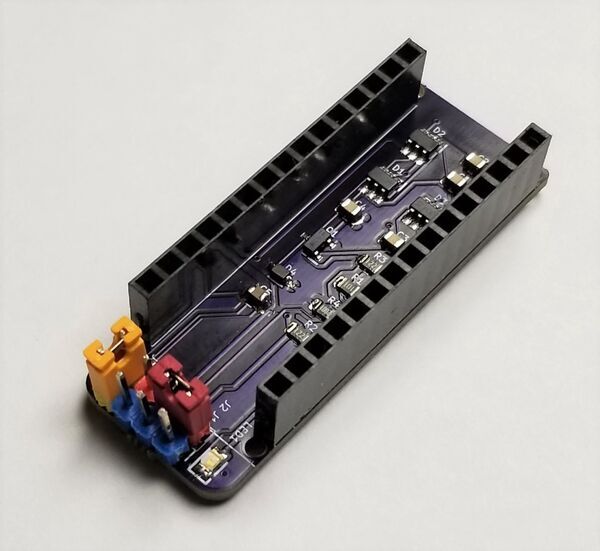
Arduino Nano HV UPDI Programmer
"The Nano HV UPDI programmer will allow using the additional configuration settings for the UPDI pin without the fear of getting locked out from the MCU. There are 3 programming modes: UPDI, HV or PCHV (described below). The target voltage is 5V. " [...]
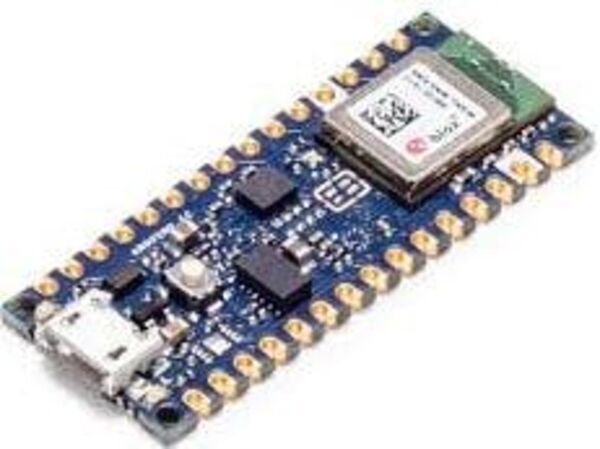
Machine Learning with Nano BLE 33 & Raspberry Pi
"In this project we take a look at making the Arduino Nano 33 BLE learn a few gestures and how to integrate it with a game! First of all, I would like to give credit to Arduino Team for providing the base framework. If you have not had the chance to go through it, I highly suggest you go through it thoroughly before proceeding further, Link: https://blog.arduino.cc/2019/10/15/get-started-with-machine-learning-on-arduino/ So first of all we will be starting by generating a machine learning model using google collab and then we shall load it into Arduino IDE to generate and upload the sketch. Note that the collab is a linux framework to generate the necessary header file (model.h) to be included with the code. Generating the Data for Machine Learning Model First we need data to train our model. It will be in the form of a csv file with all the points along the columns." [...]
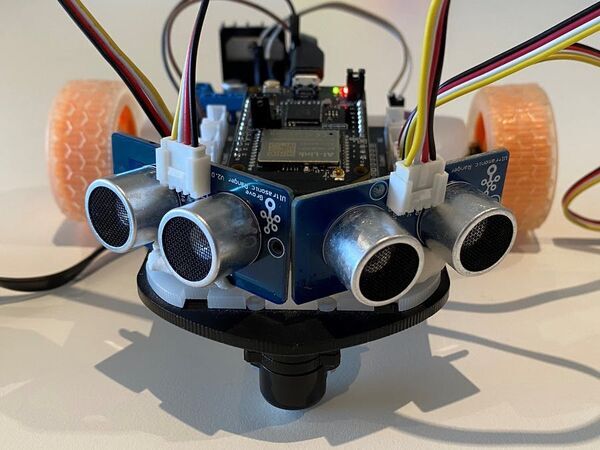
Build a Rover Combining Azure Sphere Security and FreeRTOS
"Learn how to integrate a real-time FreeRTOS application running a timing-sensitive ultrasonic distance sensor with Azure Sphere security. What you will learn You will learn how to integrate a real-time FreeRTOS application responsible for running a timing-sensitive ultrasonic distance sensor with the security and cloud connectivity of Azure Sphere. #JulyOT This is part of the #JulyOT IoT Tech Community series, a collection of blog posts, hands-on-labs, and videos designed to demonstrate and teach developers how to build projects with Azure Internet of Things (IoT) services. Please also follow #JulyOT on Twitter. Source code and learning resources Source code: Azure Sphere seeing eyed rover Real-time FreeRTOS sensors and Azure IoT. Learning resources: Azure Sphere Developer Learning Path." [...]
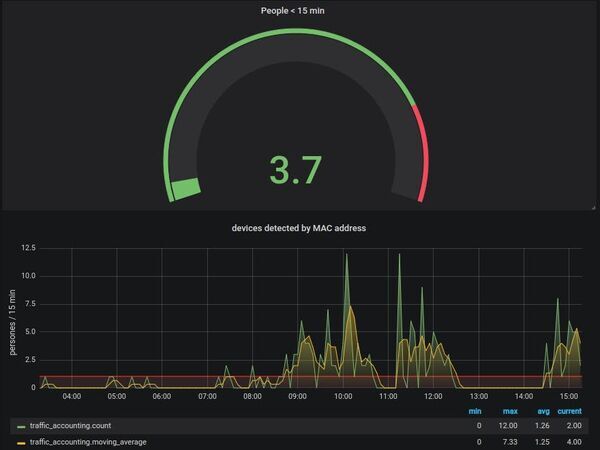
ESP8266 WiFi People Counter
"With this project you can track and count people near a defined zone using the WiFi capabilities of the ESP8266 microcontroller. Story With ESP8266 WiFi people counter project you can track and count people near a defined zone using the WiFi capabilities of the ESP8266 microcontroller. Then you can send anonymous data from the ESP8266 to your own MQTT broker, store it using influxDB server and show the information online in real-time using grafana. The project step by step: Download the files from Github Repo Setup and configure the ESP8266 program code located at WiFiPeopleCounter directory. You need to put your config data (WiFi SSID / WiFi Password / MQTT data) at credentials.h file. " [...]
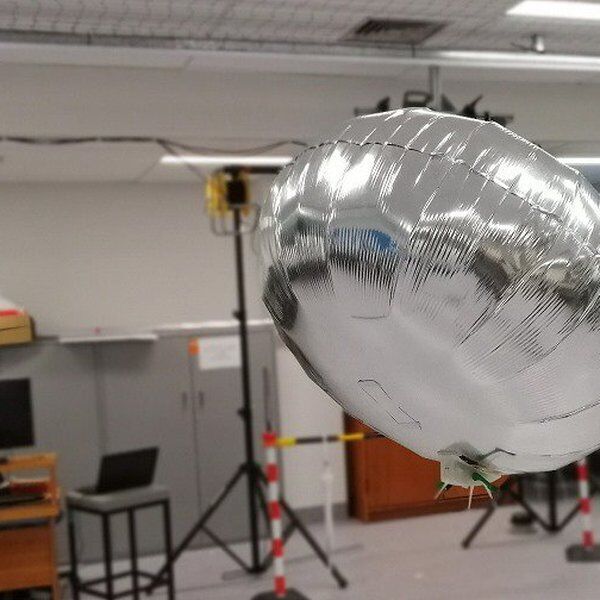
A Helium-Based, Affordable Robotic Airship
"The New Dexterity Low-Cost Robotic Airship for Education and Research Miniature indoor robotic airship platforms offer high mobility, safety, and extended flighttimes. This project focuses on the feasibility, design, development, and evaluation of such a platform for robotics education and research. Selected commercially available envelope materials are considered and tested in terms of their helium retention capability and mechanical properties. The obtained envelope properties are used in a feasibility study, demonstrating that indoor airships are environmentally and financially viable, given an appropriate material choice. The platforms mechanical design is studied in terms of gondola placement and rotor angle positioning, resulting in an unconventional, asymmetric arrangement. The developed system is experimentally validated, proving its efficiency in executing comple This project focuses on the feasibility, design, and development of an open-source, helium-based, indoor robotic airship that can be used for education and research purposes." [...]
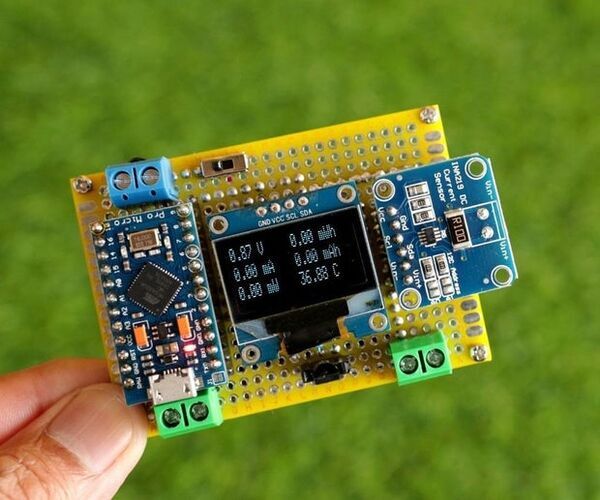
DIY Arduino Multifunction Energy Meter
"In this Instructable, I will show you how to make an Arduino based Multifunction Energy Meter. This little Meter is a very useful device that displays important information on electrical parameters. The device can measure 6 useful electrical parameters: Voltage, Current, Power, Energy, Capacity, and Temperature. This device is suitable only for DC loads such as Solar PV systems. You can also use this meter for battery capacity measurement. The Meter can measure up to voltage range from 0 - 26V and a maximum current of 3.2A." [...]

Automated Perpetual Calendar
"Years ago I came across a wooden perpetual calendar and I loved the idea. After thinking about it for months I decided I wanted to make one myself; however, there was a long list of things I wanted to do to improve on the idea. The most important change I wanted to make, is to automate the rings. I know me, and based on current wall calendars not showing the correct month for some time, if a daily change is necessary it would likely only be accurate a small percentage of the year. Combining microcontrollers, 3D printing, woodworking, and laser jet image transfer, this project will have something for everyone to learn. " [...]
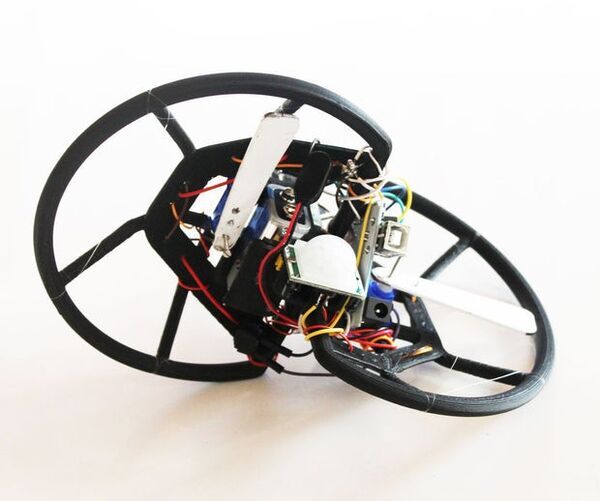
The Moving OLOID - a Different Pet in Different Times
"Corona has changed our lives: it requires us to physicially distance, which in turn leads to social distancing. So what could be a solution? Maybe a pet? But no, Corona comes from animals. Let's save ourselves from another Corona 2.0. But if we have to keep away from humans (to not infect and not be infected) and animals but remain the social beings we are, what should we do?" [...]
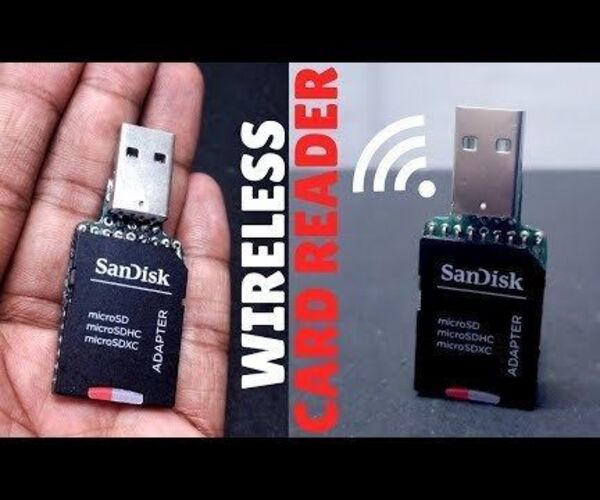
Wireless SD Card Reader - ESP8266
"USB was supposed to be universal, and the main goal was to make a hot-swappable, super easy to interface with other devices but over the years the idea went haywire. There are so many different variants of these USB ports which is so frustrating at times and the way these works totally contradict their name [USB - Universal Serial Bus] because Every USB receiver should be compatible with any USB device! You can't plug in your USB stick or a keyboard inside a charger and expect it to work. But the concept sounds too good! That's why to initiate this "Universal-Port" concept I started with a simple project "Wireless Card reader" This fulfilled all my wishes, all I have to do is to just plug it inside any USB receiver, it doesn't matter which one! As soon as you plug it in, it creates an access point where we can connect and then connect to the access point and just open up any FTP client application in any compatible device." [...]
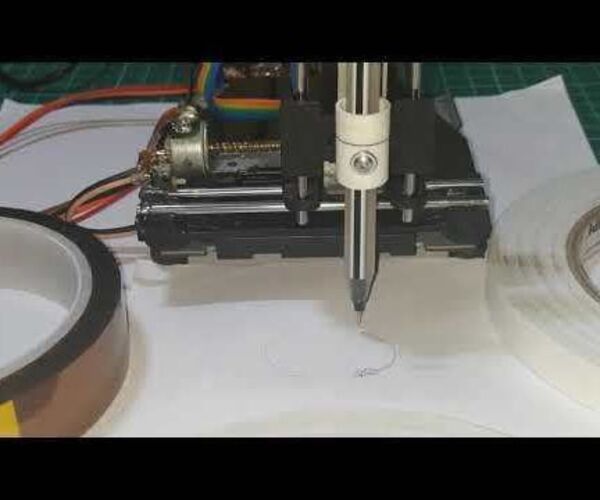
Mini 3 Axis Cnc Plotter(Grbl)
"Greetings fellow maker! In this instructable you will learn about how to make a mini cnc plotter out of scratch and electronics components. You will also learn about basic electronics skills and cnc skills associated with the project. You can follow up the updates i did before about this project at my Instagram page @hyper_makes More importantly this is a very detailed instructable and you can't just fly through steps so take your time. :) "I walked so that you can run" -Pewdiepie 2020 Supplies:These are the things required for making this project: HARDWARE Beginner/Intermediate: 3 X Old DVD motor carriages 1 X CNC Shield V4 1 X Arduino Nano 3 X A4988 stepper driver module 2 or 3 X Limit switches 12V Power supply USB A to mini B cable Ribbon cable for stepper motors and limit switches Expert: 3 X Old DVD motor carriages 1 X 6x8cm Prototying board(minimum area size) 1 X Arduino Nano 3 X A4988 stepper driver module 2 or 3 X Limit switches 1 X PCB mount toggle switch Male and Female header pins 1 X LED(for power indicator) 1 X L7805 voltage regulator 1 X 5.5mm DC Jack 12V Power supply USB A to mini B cable 28 SWG Enamelled copper wire or Single core strand hookup wire Ribbon cable for stepper motors and limit switches SOFTWARE: GRBL code UGS(Universal Gcode Sender) TOOLS: Soldering Iron Solder wire Flux Hot glue gun Super glue Acrylic sheet or Aluminnium Composite" [...]

Parallel Sequencer Synth
"This is a guide for creating a simple sequencer. A sequencer is a device that cyclically produces a series of steps that then drive an oscillator. Each step can be assigned to a different tone and thus create interesting sequences or audio effects. I called it a parallel sequencer because it is not driven by one oscillator at each step, but by two oscillators at the same time. " [...]
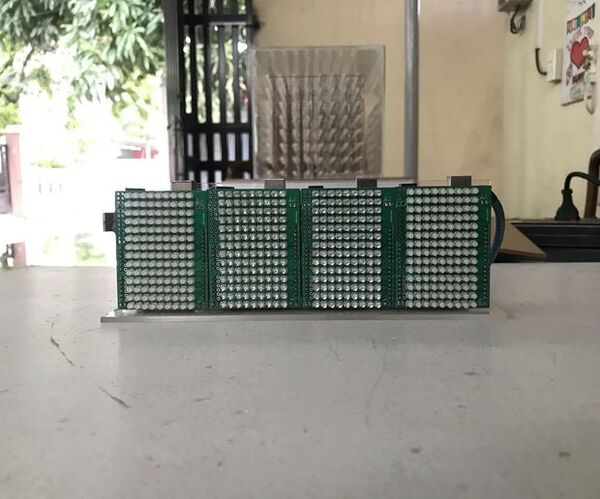
Crazy L.O.L Spectrum Analyzer
"Today I'd like to share how to make an audio spectrum analyzer - 36 bands by combining 4 LoL Shields together. This crazy project uses a FFT library to analyze a stereo audio signal, convert it to frequency bands, and display amplitude of these frequency bands on 4 x LoL Shields. The main electronic components are as below: 4pcs x Arduino Uno R3. 4pcs x LoLShield PCB. PCBWay (Full feature custom PCB prototype service) supported me these LoLShield printed circuit boards. 504pcs x LED, 3mm." [...]
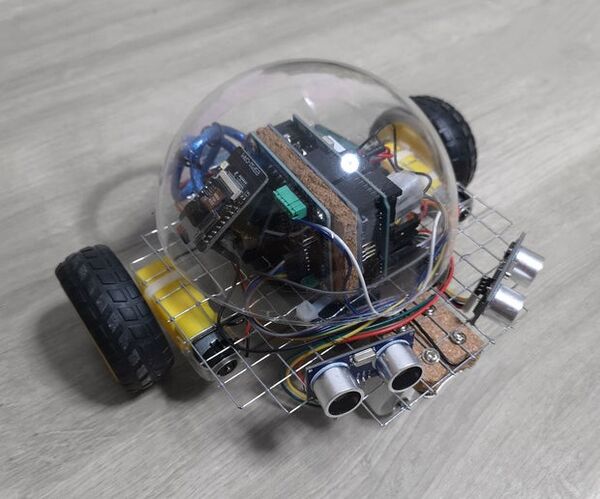
Nagging Robot | Disturbing at the Speed of Life
"The easiest way to make sure you get angry every day. Nagging Robot® has the solution. Nagging Robot® Annooy® 900 The Annooy® 900 was carefully conceived with cutting-edge DIY technology to annoy humans. by Daniel Locatelli and TzuYing Chen More power, better annoyance. Power-Lifting Bore delivers 5X the angriness power* for improved annoy performance. *(Compared to Annooy® 800 Series)." [...]
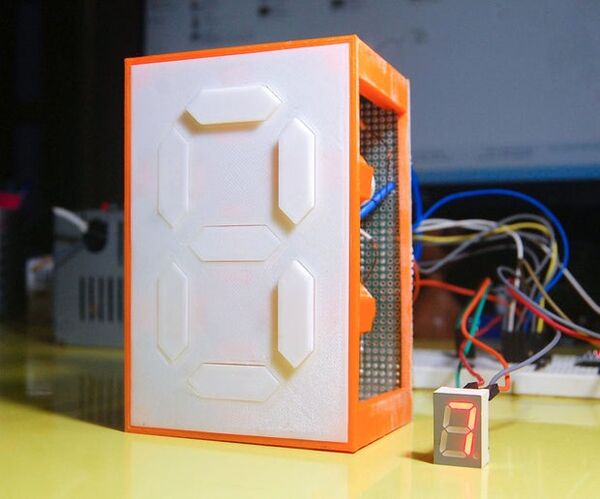
Mechanical 7 Segment Display
"I am currently in the final year of electrical engineering and was working on my final year project model. As a part of the project, I had modified a ceiling fan to work as a generator. I had replaced the original thin gauge winding with a thicker one to suit the power requirement. But due to lockdown, I was forced to scrap the model and continue just with the theory part. A lot of enameled copper wire was going to be wasted and so I decided to reuse it. As I always do, I started going through projects on the internet." [...]
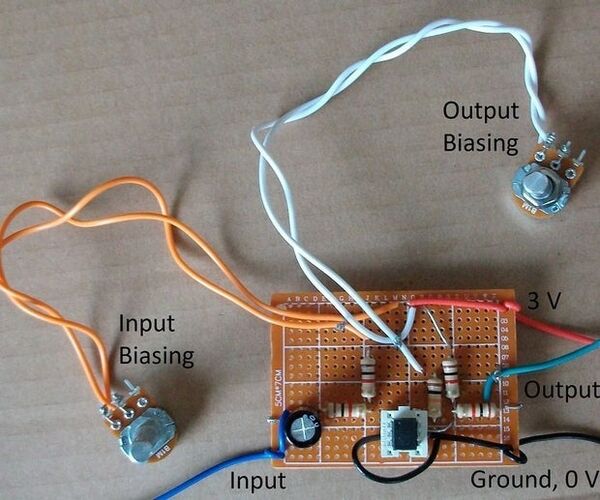
Optocoupler System
"This article explains to connect an Optocoupler System. This system is used to isolate the two power sources. Typical applications include medical where the patient needs to be isolated from possible power supply faults and surges to avoid electric shocks. Those systems are used in EEG an ECG machines. The amplifier is usually powered by rechargeable batteries. The circuit can work with just one 1.5 V power supply." [...]

DIY Professional Grade Welding Table (with FREE Plans)
"I always wanted to have a professional welding table. But the commercial ones cost couple of thousand dollars which is way too much for hobby use. So I have designed my own version which is very similar to the commercial ones, but it costs a fraction of a price. The things that are really cool on this table: - it has pretty much perfectly flat surface - you can clamp your workpieces anywhere in the middle of the table and even on the sides of it. This increases the practicality a million times. - it is on wheels I decided to design a relatively compact table that would be still big enough for most of my projects." [...]
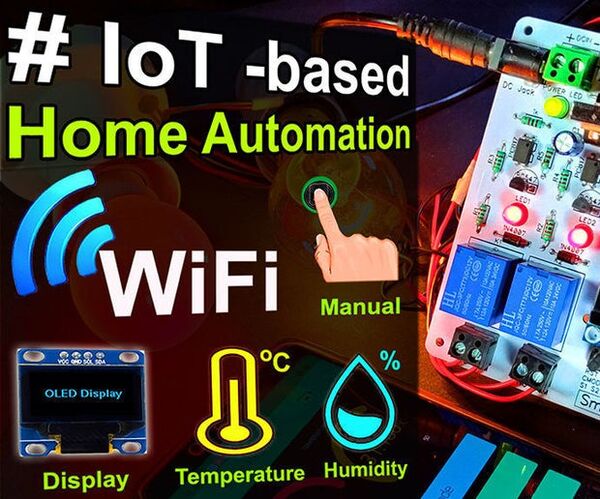
How to Make IoT Based Home Automation With NodeMCU Sensors Control Relay
"In this IoT based project, I have made Home Automation with Blynk and NodeMCU control relay module with real-time feedback. In the Manual Mode, this relay module can be controlled from Mobile or smartphone and, Manual switch. In Auto Mode, this smart relay also can sense the room temperature and sunlight to turn on and off the fan and light bulb. This smart home project has the following features: 1. Home appliances controlled from Mobile using Blynk App 2. Home appliances controlled by temperature & Humidity sensor automatically (In Auto Mode) 3." [...]
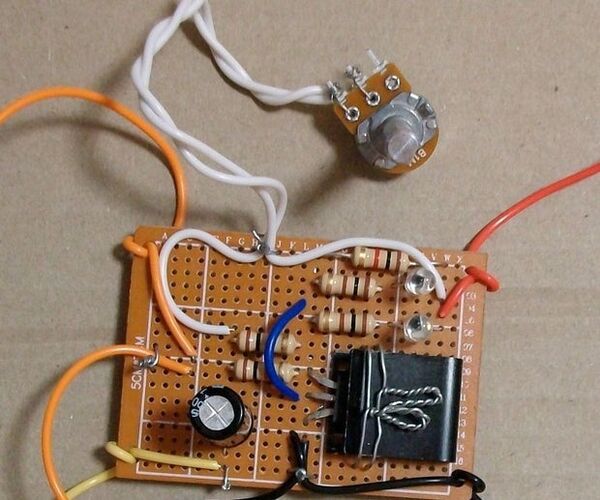
Infrared Transmitter
"This article shows you how to make an infra red analogue transmitter. This is an old circuit. Nowadays laser diodes are used to transmit digital signals via optic fibres. This circuit can be used to to transmit audio signal via infrared. You will need a receiver to detect the transmitted signal. The signal does not need to be modulated." [...]
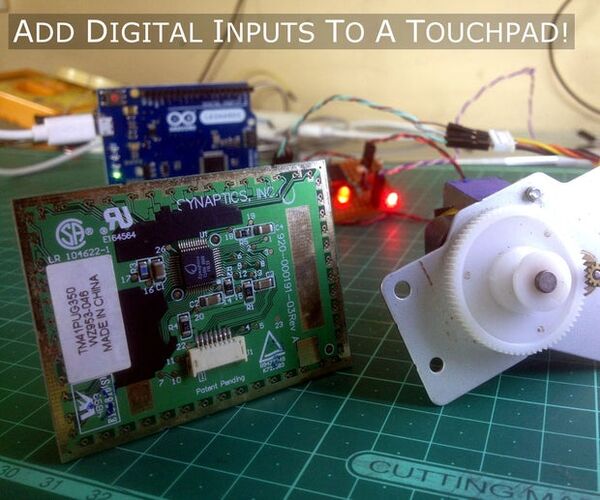
A Cool Laptop Touchpad Hack for Arduino Projects!
"A while back, when I was tinkering around with a PS/2 touchpad with an Arduino microcontroller, I found out that two of its onboard connections can be used as digital inputs. In this Instructable, let's learn how we can utilize a PS/2 touchpad's additional digital inputs to use in our Arduino projects. Let's get started! " [...]
That's all Folks!



